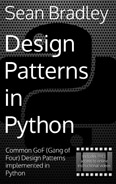Orbit Controls
Tip
This course has been updated. For the newer content, please visit Orbit Controls
Video Lecture

Description
Orbit controls allow the camera to orbit around a target.
Lesson Script
./src/client/client.ts
1
2
3
4
5
6
7
8
9
10
11
12
13
14
15
16
17
18
19
20
21
22
23
24
25
26
27
28
29
30
31
32
33
34
35
36
37
38
39
40
41
42
43
44
45
46
47
48
49
50
51
52
53
54
55
56
57
58
59
60
61
62
63
64
65
66
67
68
69
70
71
72
73
74
75
76
77
78
79
80
81
82
83
84
85
86
87 | import * as THREE from 'three'
import { OrbitControls } from 'three/examples/jsm/controls/OrbitControls'
import Stats from 'three/examples/jsm/libs/stats.module'
const scene = new THREE.Scene()
scene.add(new THREE.AxesHelper(5))
const camera = new THREE.PerspectiveCamera(75, window.innerWidth / window.innerHeight, 0.1, 1000)
camera.position.z = 2
const renderer = new THREE.WebGLRenderer()
renderer.setSize(window.innerWidth, window.innerHeight)
document.body.appendChild(renderer.domElement)
const controls = new OrbitControls(camera, renderer.domElement)
// camera.lookAt(0.5, 0.5, 0.5)
// controls.target.set(.5, .5, .5)
// controls.update()
// controls.addEventListener('change', () => console.log("Controls Change"))
// controls.addEventListener('start', () => console.log("Controls Start Event"))
// controls.addEventListener('end', () => console.log("Controls End Event"))
// controls.autoRotate = true
// controls.autoRotateSpeed = 10
// controls.enableDamping = true
// controls.dampingFactor = .01
// controls.enableKeys = true //older versions
// controls.listenToKeyEvents(document.body)
// controls.keys = {
// LEFT: "ArrowLeft", //left arrow
// UP: "ArrowUp", // up arrow
// RIGHT: "ArrowRight", // right arrow
// BOTTOM: "ArrowDown" // down arrow
// }
// controls.mouseButtons = {
// LEFT: THREE.MOUSE.ROTATE,
// MIDDLE: THREE.MOUSE.DOLLY,
// RIGHT: THREE.MOUSE.PAN
// }
// controls.touches = {
// ONE: THREE.TOUCH.ROTATE,
// TWO: THREE.TOUCH.DOLLY_PAN
// }
// controls.screenSpacePanning = true
// controls.minAzimuthAngle = 0
// controls.maxAzimuthAngle = Math.PI / 2
// controls.minPolarAngle = 0
// controls.maxPolarAngle = Math.PI
// controls.maxDistance = 4
// controls.minDistance = 2
const geometry = new THREE.BoxGeometry()
const material = new THREE.MeshBasicMaterial({
color: 0x00ff00,
wireframe: true,
})
const cube = new THREE.Mesh(geometry, material)
scene.add(cube)
window.addEventListener('resize', onWindowResize, false)
function onWindowResize() {
camera.aspect = window.innerWidth / window.innerHeight
camera.updateProjectionMatrix()
renderer.setSize(window.innerWidth, window.innerHeight)
render()
}
const stats = new Stats()
document.body.appendChild(stats.dom)
function animate() {
requestAnimationFrame(animate)
// controls.update()
render()
stats.update()
}
function render() {
renderer.render(scene, camera)
}
animate()
|
Useful Links
OrbitControls (Official Documentation)
KeyboardEvent.code
Azimuth































